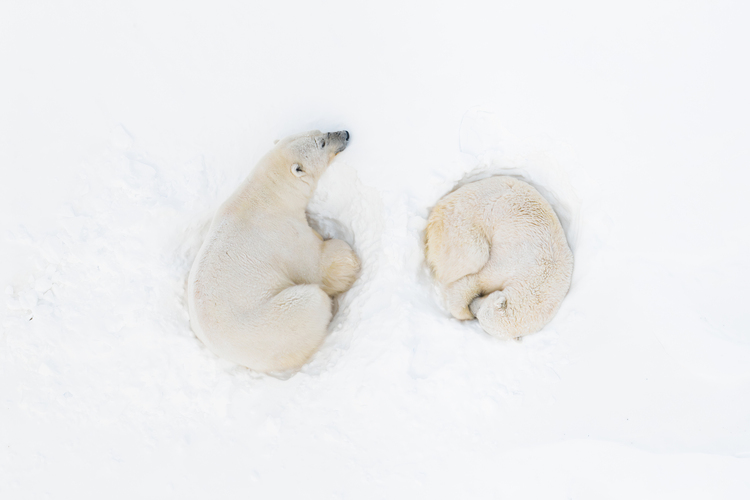
‘Edition Hope’ brings together over 200 of the world’s leading wildlife photographers in a powerful fundraising effort to support conservation amid mounting threats to nature
Prints for Wildlife, the acclaimed fundraising initiative that unites the world’s leading wildlife and nature photographers, will return on 21 August 2025 with a powerful new edition: Edition Hope
Building on the success of previous editions, which have raised over $2.1 million for conservation since 2020, Edition Hope responds to a new, urgent threat: the global shift away from environmental protection.
Conservation programmes around the world are facing abrupt funding cuts and a possible future where nature is undervalued, threatening years of progress to protect biodiversity, ecosystems and the communities that depend on them for their livelihoods.
One of the largest print sale fundraisers ever, this year’s collection will feature stunning, limited-edition prints donated by more than 200 renowned wildlife and nature photographers, including Joel Sartore, Suzi Eszterhas, Florian Ledoux, Michael Poliza, Gurcharan Roopra, Björn Persson, Vicki Jauron and David Lloyd, along with new, emerging voices to expand the movement’s reach and foster greater inclusion.
‘The striking images that are part of this collection so perfectly illustrate the power and beauty of nature in its many forms,’ said Interim CEO of Conservation International, Daniela Raik. ‘There is no question that everything is connected and when nature thrives, so do we.’
Prints will be available for one month only at printsforwildlife.org, starting on Thursday, August 21, 2025 and closing on Sunday, September 21, 2025.
Each print is priced at $125, and all net proceeds (after printing and handling) will directly benefit Conservation International, a global non-profit working to protect nature for the benefit of people and the planet.
Call of the Kopjes – Alexandra Wood
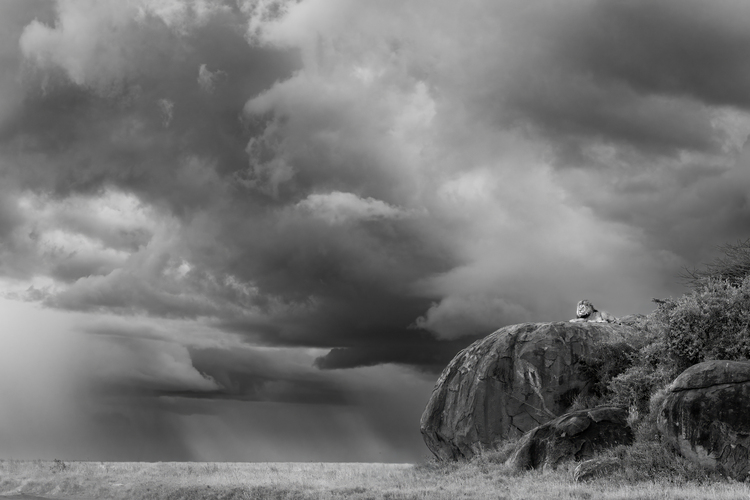
‘Photographed in the Eastern Serengeti, Tanzania, during the rains, Call Of The Kopjes portrays a lone male lion, known locally as Scar, standing sentinel atop a granite outcrop as a storm gathers behind him. With his namesake wound etched across one eye, Scar was a formidable and familiar presence in the region, his reign marked by resilience.’
‘In this fleeting moment, his stance felt both defiant and timeless. The kopje, more than a perch, was his vantage point – a place of command and refuge above the stormy plains.’
Natural Power – Bjorn Persson
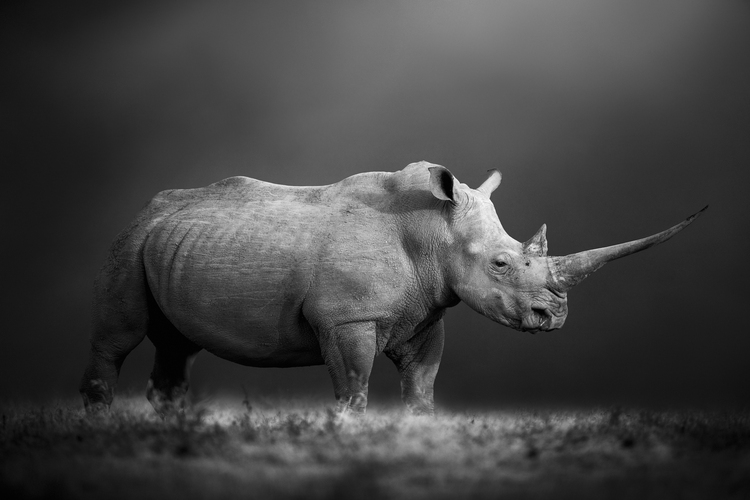
‘A southern white rhino with an unusually long horn stands steadfast against a black backdrop, embodying nature’s unyielding power,’ said Persson.
‘This was taken in Solio Game Reserve, Kenya. I felt truly blessed to see such a majestic and rare creature, and it was as if I had been transported back in time to an era when dinosaurs roamed the earth.’
‘Using a monochrome style, I intended to capture the animal’s raw power and ancient heritage. Due to poaching, only a few of these extraordinary giants remain in the wild. Poachers target the longest horns, and just one kilogram of rhino horn can be worth up to USD$60,000 on the black market.’
Lifeboat – Casey Cooper
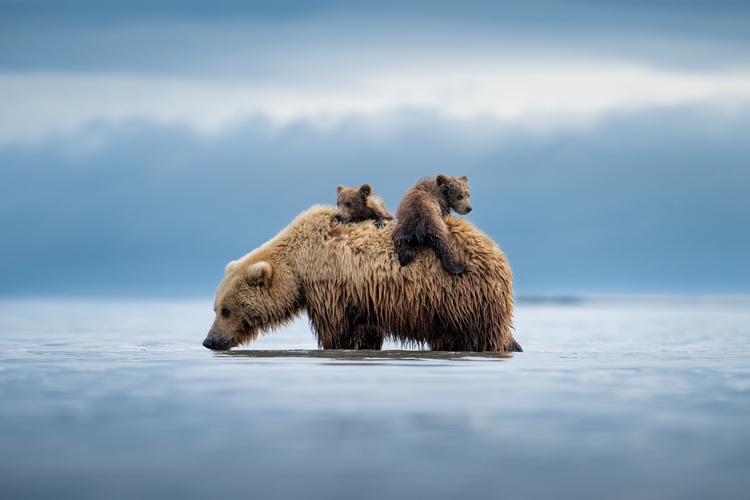
‘This image is of a mother brown bear carrying her cubs back to shore in Katmai National Park, Alaska, United States,’ said Cooper.
‘They had napped in low tide after digging for clams for a few hours. They were clearly exhausted and didn’t wake up until the water had risen around them.’
‘The cubs were scared and too young to swim. The sow let the cubs get on her back to bring them to safety. I watched as the story unfolded. I had a feeling she would end up putting the cubs on her back and was hoping for just that,’ Cooper continued.
‘Sure enough, once the water rose a bit more, they woke up and cubs were crying. The mother huffed and they knew to climb up and get a ride back to shore. It’s one of my favourite moments I’ve witnessed.’
Flamingos over Lake Magadi – David du Chemin

‘Kenya’s Lake Magadi, on the border of Tanzania, is a soda lake. Its shallow waters are a perfect feeding ground for this pair of lesser flamingos that took flight over the surface of the water, which was patterned and coloured by algae blooms in the heat of the day. This photograph was made from a helicopter, flying over those warm alkaline waters.’
Mittens – Denise Ippolito
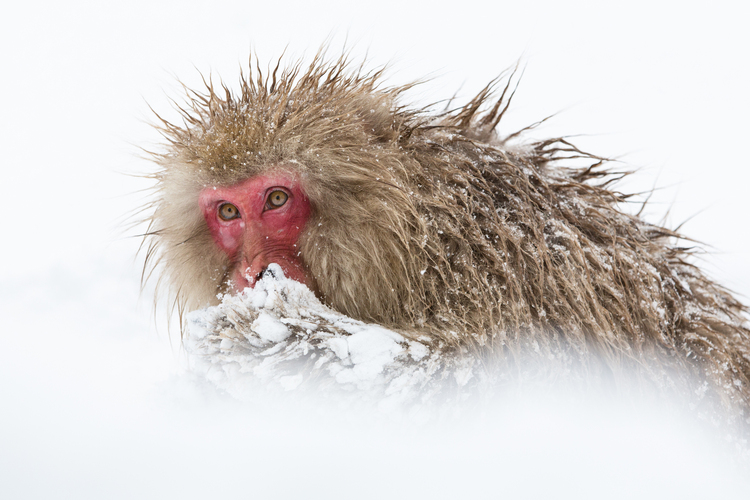
‘Japanese macaques, also known as snow monkeys, are native to Japan. They live in forested areas and thrive in social groups.’
‘I photographed this particular snow monkey in Nagano Prefecture, Japan, just after a heavy snowstorm. The primate stopped briefly during its play. I particularly liked its snow-matted hands and expressive face.’
More culture reads…
- Paul ‘Barbs’ Barbato on the importance of geography & exploration
- This year’s best geography books on the modern world
- Osman Yousefzada on the lingering arc of global power
Polar Bear Romance – Florian Ledoux

‘On the mountain slopes, a male and female polar bear found solace in each other’s company, sharing an intimate moment during their courtship, which took place on the Svalbard Archipelago in Norway. After mating, they fell asleep together. In that moment, despite the icy cold, the emotion was so intense that tears came down my face, freezing immediately.’
When Mammoths Ruled the Earth – George Dian Balan

‘The climax of 50 million years of elephant evolution, this incredible Asian ‘super tusker’ sports tusks that are the relative size and shape of the southern mammoth, the ancestor of the woolly mammoth,’ said Dian Balan.
‘While in the very present, we can travel back in time. Very few people know that Asian elephants can grow such amazing ivory. The commanding pose shows the bull raising his head, displaying his strongly curved, almost nine feet-long tusks against the canvas of a sky balanced by glorious clouds. This was taken in Kham Mueang, Thailand.’
Naltwasha Meets Shaba – Georgina Goodwin
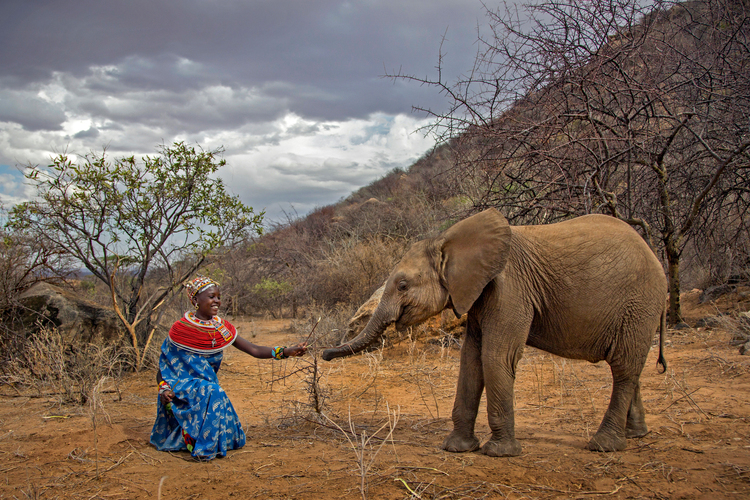
‘A quiet connection between Naltwasha, a young Samburu girl, and Shaba, an orphaned baby elephant at Reteti Elephant Sanctuary in northern Kenya.’
‘This was captured while on assignment for Conservation International’s My Africa VR film. This moment unfolded as dark storm clouds parted and sunlight poured in, just as the two met for the first time – a moment used for the film’s front cover poster. For a split second, everything aligned. Set in Samburu, this image reminds us of the fragile, beautiful bond we share with nature and the power of community-led conservation.’
A Brushstroke of Gold – Gurcharan Roopra

‘In the stillness of night at Shompole Community Land in Southern Kenya, deep in Magadi, Kenya, a Maasai Giraffe cautiously approached the water. Every movement was slow and deliberate.’
‘Photographing this moment meant waiting in silence, working in near-total darkness. With a long exposure and just a flicker of light, I captured the graceful arc of motion as it drank – a fleeting, almost mythical scene. One frame. One breath. The photo is a rare glimpse into the secret life of the wild.’
Family Gathering – Jie Fischer
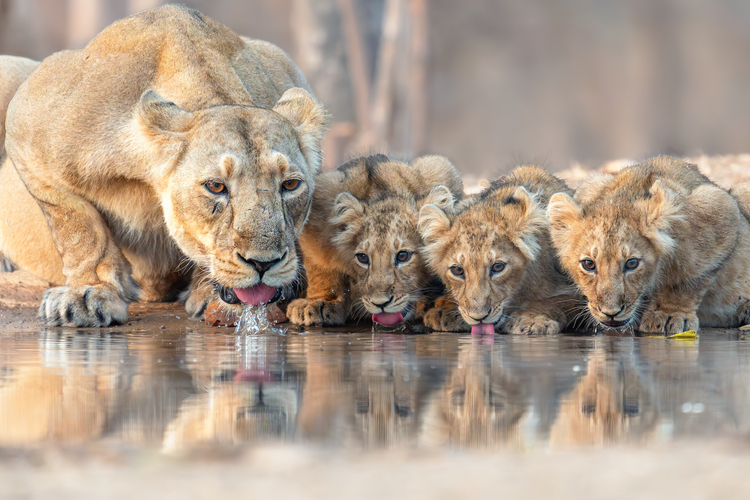
‘This photo was taken in Gir National Park, Gujarat, India, which is the last stronghold of the Asiatic lion. These elusive lions, with their greyish coats, blend seamlessly into the forest – a stark contrast to their African relatives, whose tawny colour suits the open savannas.’
‘Lying low in the undergrowth near a waterhole, we waited patiently in the stifling heat, hoping the lioness would lead her cubs to drink. The dim forest light, paired with the natural skittishness of these endangered lions, made photography extremely challenging. Our patience and restraint were rewarded with a moment of quiet magic – a glimpse into the intimate life of a species fighting for survival.’
More photography from Geographical…
- The photography of Captain William Shakespear
- Wildlife Photographer of the Year 2024 winners
- Antipodean delights from the Australian Geographic Nature Photographer of the Year competition
Ancient Balance by Marco Gaiotti
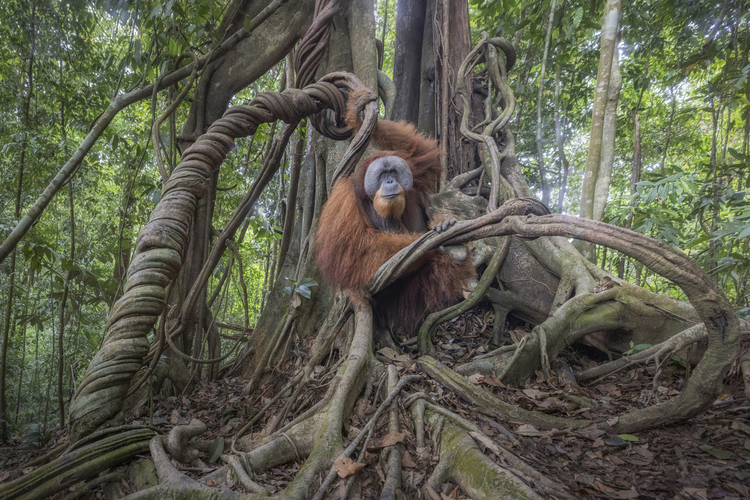
‘The image was taken deep inside the northern section of Gunung Leuser National Park in Sumatra, Indonesia,’ said Gaiotti.
‘This individual is a wild male, still relatively young, posing on a magnificent strangler fig. The animal was spotted by my guide after a trek through the forest for about nine kilometres. After the initial surprise, we approached the animal very slowly, monitoring its reactions.’
‘As the minutes passed, when the darkness of evening was now looming over the forest, the individual began to relax and allowed us to take a few shots with the wide-angle lens. Shortly after, the orangutan climbed up into the treetop, disappearing into the greenery of the forest.’
Trunk Tangle by Mary Schrader
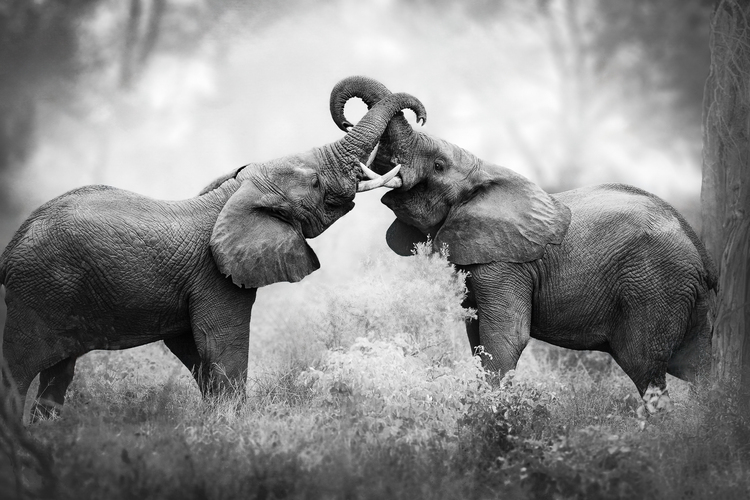
‘Two young elephants face off in a playful spar, trunks twisting and tusks clacking in a dance of strength and skill. They lunged and leaned, backed away and returned, locked in a rhythm of push and pull, challenge and retreat.’
‘For a few electric moments, the clearing pulsed with energy, as the animals were completely absorbed in their ritual. In Sabi Sands Nature Reserve, South Africa, the bush became a quiet stage where wild stories unfolded.’
In Her Shadow – Rachel Moore
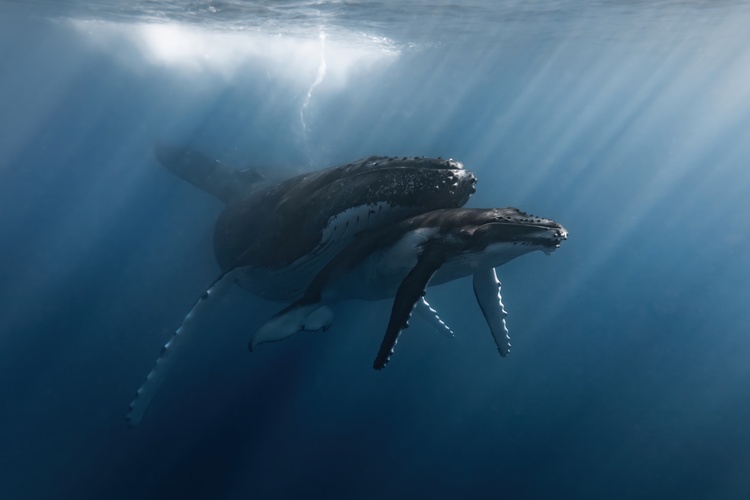
‘I captured this image in Mo’orea, a South Pacific island in French Polynesia. On this particular day, we had the privilege of entering the water to observe a mother and her calf resting at the surface.’
‘I was able to photograph this tender moment of the baby nestled beneath its mother. At this age, calves have limited control over their buoyancy and will often use their mothers like a weight belt to help them stay submerged and safe.’
Blazing Through – Rahul Sachdev
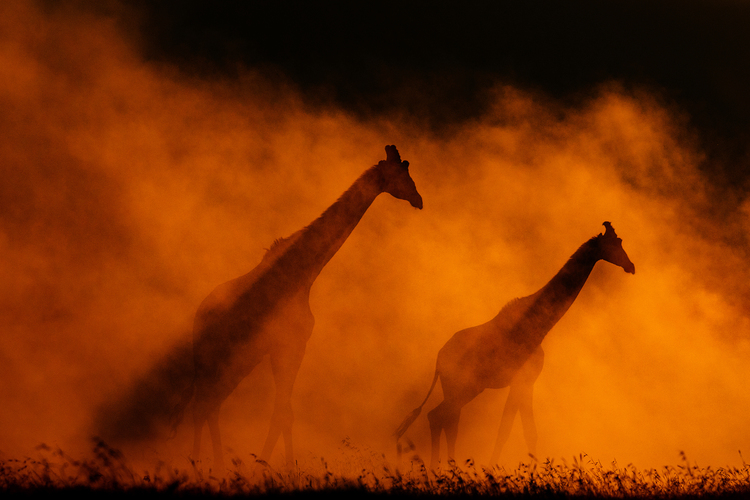
‘Two reticulated giraffes walk slowly through a thick cloud of dust in Solio Game Reserve, Kenya. The setting sun makes the dust look like fire, as the giraffes make their way through it.’
‘The scene feels quiet and powerful, as if the world has paused for a moment. The giraffes move together, calm and graceful, their shapes almost floating in the glowing haze. This image captures the wild beauty of Africa – a moment where I felt as if light, dust and life came together.’
The Sentinel by Stefan Christmann

‘This photo shows the emperor penguin colony of Atka Bay, Antarctica, close to German Antarctic Research Station Neumayer-III, standing in front of one of the most prominent icebergs, which got stranded there in 2012.’
‘For its frowny face-shaped ice cave we called it ‘Sad Glacier’. Sad Glacier was a landmark that was used by both penguins and humans to gain orientation on the otherwise flat sea ice, especially during bad weather conditions. During early summer, shortly before the annual sea ice break-up, Sad Glacier ungrounded and became mobile again.’
‘It eventually flipped upside down after the penguins had left the colony, as if its job had been accomplished. While I was sad about the fact that I would never get to see Sad Glacier again, it comforts me to know that after the flip, it was finally smiling.’
The Leopard on the Snake – Thomas Weder
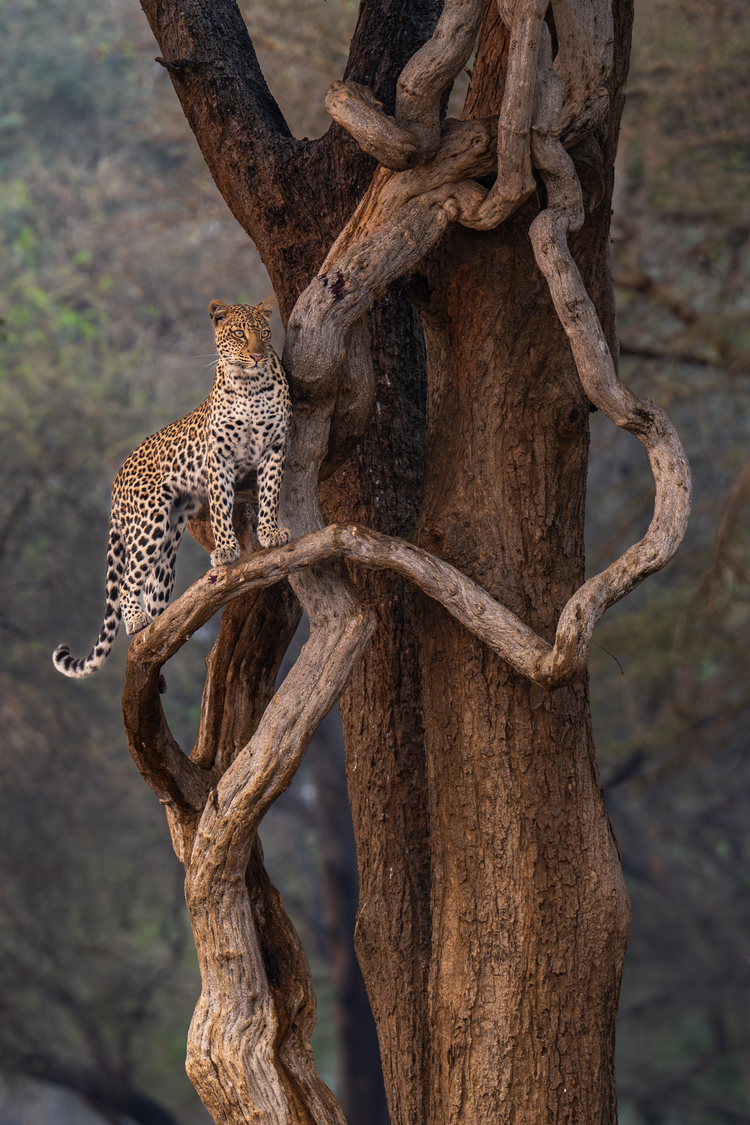
‘In the enchanted forests of Zambia’s Lower Zambezi National Park, a female leopard graces a pale root winding skyward – a moment pulled straight from a dream. We had followed her in silence, guided by instinct and the quiet confidence of our tracker, who whispered of a tree she might climb.’
‘We drove ahead, heartbeats rising, and positioned ourselves before the sculptural roots. As she emerged from the shadows and stepped onto the root, time stood still. It was as if the forest had painted this scene just for us – a vision imagined, then made real.’
Giraffes Can Dance – Vicki Jauron

‘In the enchanted forests of Zambia’s Lower Zambezi National Park, a female leopard graces a pale root winding skyward – a moment pulled straight from a dream. We had followed her in silence, guided by instinct and the quiet confidence of our tracker, who whispered of a tree she might climb.’
‘We drove ahead, heartbeats rising, and positioned ourselves before the sculptural roots. As she emerged from the shadows and stepped onto the root, time stood still. It was as if the forest had painted this scene just for us – a vision imagined, then made real.’
Water Games – Vladimir Cech Jr
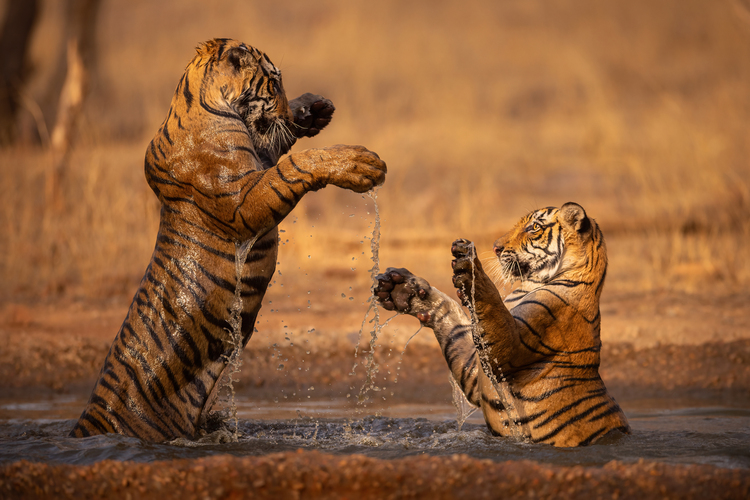
‘Two Royal Bengal tiger sub-adults playing in a little waterhole in the otherwise dry landscape of Ranthambore National Park in central India.’
‘I visit India regularly in the peak of the dry season so I’m quite used to good tiger sightings but the moments I spent with these ‘little villains’ was really special. They put on a perfect show and at one point practically the whole family was in the water, including the mother.’



